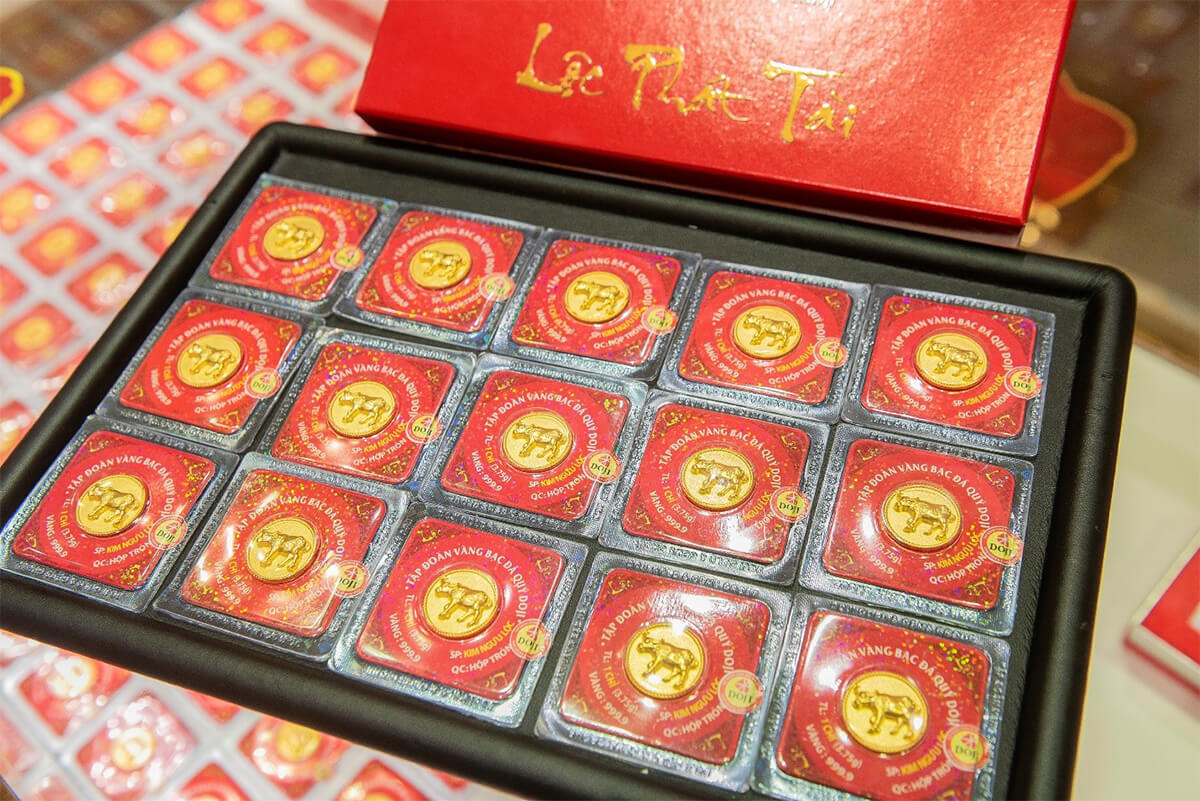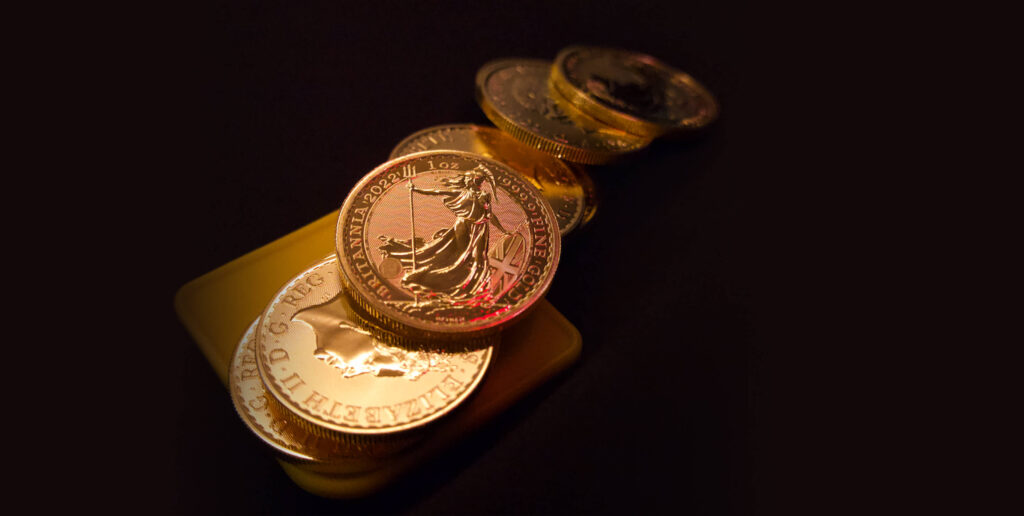Vietnam’s Gold Market
By Huynh Trung Khanh, Vice Chairman, Vietnam Gold Traders Association

Gold has played an important role in Vietnam’s economy and in the lives of locals for many years. In the 20th century, Vietnam experienced war, high inflation, economic instability and currency devaluation. As a result, Vietnamese people trust gold more than the country’s currency, and also is their preferred asset class, as with other Asians.
In 2021, Vietnam was the largest gold bullion and coin market in Southeast Asia and ranked among the top 10 globally. According to the World Gold Council, its demand for bars and coins was 31.1 tonnes, exceeding Thailand and Indonesia, whose demand was 28.7 and 19.8 tonnes, respectively. Adding to its demand for jewellery, Vietnam’s consumer gold demand increased to 43 tonnes, second in the region, behind Indonesia’s 46.8 tonnes.
Long history
Before 1975, gold was used as a medium of exchange and a unit of measurement. In the 1960’s, a Honda Cub motorbike was priced at 3 taels of gold (1 tael = 37.5 grams), and the monthly salary of a senior government official was pegged at 2 taels of gold.
Kim Thanh was a well-known refiner and bullion dealer in Southeast Asia before and during the Vietnam War (1 Nov 1955 to 30 April 1975). Its gold bars (1 tael, with 99.99% purity) were used as a means of exchange and a store of value. After the Vietnam War, Kim Thanh gold bars, or Swiss bars, were portable assets for the Vietnamese boat people and other refugees.
AFTER THE VIETNAM WAR WAS A PERIOD OF HYPERINFLATION, WHICH SAW DOUBLE-DIGIT INFLATION FROM 1975 TO THE EARLY 1990S.
After the Vietnam War, there was a period of hyperinflation, which saw double-digit inflation from 1975 to the early 1990s, reaching its peak in 1986 (875%). In the late 1980s to the early 1990s, real estate, motorcycles, televisions, livestock and even agricultural products were priced and traded in gold. However, as inflation eased in the early 2000s, gold’s functions in exchange and price measurement gradually decreased, alongside the use and exchange of the Kim Thanh Gold Bar.
| Economic Overview (2020) | |||
| Population 98.5 million | GDP GROWTH 2.9% | EXPORT US$ 226 billion | IMPORTS US$ 181 billion |
| GDP per capita $2,785 | CPI 2.8% | International reserves US$ 78.3 billion | External debt as a share of GDP US$ 47.1 % |
Source: World Bank and Vietnam GSO
Saigon Jewelry Company (SJC) was the largest gold tael bar production and distribution company in Vietnam, with SJC gold bars dominating the market, accounting for 90% of the gold bullion market share in the domestic market, with more than 22 million bars (equivalent to 825 tonnes) in circulation since its introduction into the market in 1989. From 2012, with the implementation of Decree No. 24 by the State Bank of Vietnam (SBV), the SJC gold tael bar has been considered the national bar brand and falls under the close supervision of SBV, which tightly controls its production and distribution network. Since then, production of SJC tael bars has been extremely limited, while bar demand is still growing strong, making them like “rare collection items” with a premium reaching VND 20 million per tael (US$700 per troy oz.) in February 2022.
Despite being hailed as one of Southeast Asia’s fastest-growing economies and one of the few countries to have positive economic growth despite the pandemic, with GDP growth of 2.91% in 2020, Vietnam still lags its global counterparts in cashless and digital transactions. More than 95% of all payments in the country take place using cash or gold.
Some 47 years after the reunification of Vietnam, the national currency, the Vietnamese dong (VND), is not yet convertible for economic and political reasons, and gold bars and chi rings are still the preferred hedging tool for the Vietnamese public (with at least 500 tonnes of gold in hoarding as per the official estimates) against the nearly constant inflation rate, as well as the primary store of wealth for the rural class of the Mekong Delta, which always have a very close affinity to gold since the region founding in the 17th century.
Development of Vietnam’s Gold Market (1988–2012)
The development of the Vietnamese economy began with the introduction of Doi Moi, or renovation, in December 1986. The set of economic reforms aimed to develop Vietnam’s centrally planned economy into a market-driven one with a socialist orientation.
The early 1990s witnessed the first wave of foreign direct investment (FDI) into Vietnam, which pushed its GDP to 8–9% by the mid-1990s. In 1997, the currency crisis hit Asia, particularly Thailand and Indonesia, but its effects on Vietnam were less pronounced, as the country’s financial market was not open to foreign countries. The damage in Vietnam was limited to a fall in GDP, to 4% in 1999.
The local government in Ho Chi Minh City approved the manufacture of gold bars weighing in taels in 1988, of which 1 tael is almost equivalent to 37.5 grams. While other producers soon produced their imprinted gold bars, SJC gold bars were the most circulated, with more than 22 million Golden Dragon tael bars issued by SJC through several gold bar promotional campaigns, such as the Gold Accumulation Scheme and Gold Savings Box, by the late 1990s. The Vietnamese also purchased high-priced goods with SJC gold bars and listed property prices in SJC taels.
In the 2000s, foreign direct investment (FDI) flowed back into Vietnam. This pushed its GDP above 8% in 2005, a level that was maintained for three years. The growth in FDI was 8.5% and exceeded US$20 billion in 2007. This growth created a new-found appetite for investment among the Vietnamese. Gold, real estate and stocks became popular asset classes for investments.
The government abolished all administrative licensing for the management of gold trading activities in 1999, and in the following year, the State Bank of Vietnam, the country’s central bank, allowed credit institutions to mobilise gold in term deposits along with Vietnamese dong deposits guaranteed by gold. Besides that, the import of gold was permitted in 2001.
In 2005, Vietnam’s finance ministry reduced the import tax on gold bars from 1% to 0.5%, and the following year, the central bank approved margin trading on domestic and foreign gold. In 2007, the Asian Commercial Bank opened leveraged gold trading facilities, and many banks followed suit in opening similar trading facilities. However, while this increased gold imports, it also increased the country’s trade deficit.
In June 2008, the government decided to stop the import of gold. However, this created a surge in gold prices and resulted in more parallel imports. In November 2009, the government resumed gold imports, which resulted in a sharp increase in import figures and a sharp drop in reserves.


The Gold Market Under Control (2012 – April 2022)
After years of active and free trading, particularly from 2008 to 2010, the central bank decided to take action to cool the gold market. It issued control measures, which included the closure of more than 20 gold trading floors.
The market has been stable since the Vietnamese government issued a new decree in 2012 to enable the central bank to directly intervene in the gold market. The State Bank of Vietnam thus became the sole controller of gold trading in the country. The new rules meant that only companies with a minimum capital of 100 billion Vietnamese dong (US$4,356), yearly tax payments of 500 million Vietnamese dong, and branches in a minimum of three provinces would be allowed to trade gold and import gold bars. However, this put many small gold traders out of business. The number of gold traders decreased sharply from over 10,000 to around 2,500.
Some credit institutions and jewellery manufacturers had to close, as a result of the new rules, which stated that a credit institution must own a charter capital of at least 3 trillion Vietnamese dong (US$131 million) and have registered for gold bar trading and be based in at least five provinces and municipalities. In order to qualify as a gold jewellery manufacturer, the company must be lawfully established, possess a business registration certificate to make gold jewellery, and have the necessary production facilities and equipment.
According to information found at the State Bank of Vietnam website, we understand that the gold market is still under very strict controls, and there is not much freedom to import and export gold. We also understand that the Vietnamese government is solely authorised to produce gold bullion, and it is also the only entity authorised to import and export raw gold for bullion production. Companies can import raw materials used in gold jewellery production, but this requires a license from the central bank, which is also required for trading gold bullion in Vietnam.
The following list of prohibited acts was published in Vietnam Law & Legal Forum magazine on 27 April 2012:
Prohibited acts in gold trading under Decree No. 24/2012/ND-CP of April 3, 2012:
- Producing gold jewellery and art craft without a certificate of business legibility granted by the State Bank;
- Trading in gold bars; or importing or exporting gold material without a State Bank license;
- Individuals bringing gold upon entry or exit in excess of prescribed limit without a State Bank license;
- Using gold as a means of payment;
- Producing gold bars in contravention of this Decree;
- Engaged in other gold trading activities without the Prime Minister’s permission and a State Bank license;
- Violating this Decree and other related laws.
The decree created problems for local gold jewellery manufacturers, as they could no longer access gold for import purposes. The central bank later gave permission to a few firms to import gold under their strict supervision, but as yet no gold import quota has been granted.
Despite the strict rules governing the gold trade, there is no shortage of imported gold bars in the market as there is a healthy underground market for gold with a higher premium of US$40/troy oz. from Cambodia, Laos and China. Additionally, while the gold retail distribution network has changed superficially on the surface, the core business remains strong, with about 10,000 gold shops in the country, which sell gold chi rings over the counter and gold tael bars under the counter.
On 27 December 2019, SBV released Circular 29/TT-NHNN, which amended and supplemented some articles of Circular No.16/2012/TT-NHNN dated 25 May 2012. It also paved the way for government officials to implement Decree 24, managing gold trading operations.
There were four articles in Circular 29/TT-NHNN29, which took effect on 12th February 2020:
- It abolished three administrative procedures regarding:
- Changes in the name and address of a licensed gold bullion trading point;
- Supplementing a new gold bullion trading point;
- Requesting for termination of gold bullion trading operations at a licensed gold bullion trading point.
- Licensed credit institutions/businesses with gold bullion trading operations need to provide quarterly reports to the SBV when they make adjustments or changes to the gold bullion trading points.
- It simplified some regulations on the reporting procedures enforced upon the SBV municipal and provincial branches and the credit institutions/businesses with gold bullion trading operations.

Over the past 10 years, the Vietnam gold market appears to be stable, with many business activities going underground, such as sourcing gold raw materials needed for gold jewellery manufacturing and producing investment gold chi rings. Therefore, the Vietnam Gold Traders Association has submitted several petitions to the Government and the SBV, asking for the following:
- The grant of import quotas for gold raw material used in gold jewellery fabrication as stipulated by Decree 24 and accordingly to production demand proofs submitted by key manufacturers.
- The authorisation for major gold companies to produce their own branded gold tael bars to match the growing demand for investment bars and to bring down the high sales premium of SJC bars down to acceptable levels.
- The set-up of a national Gold Exchange (based on the SGE model) under the management and supervision of the SBV to provide a regulated domestic market linking to regional and international gold markets, to cater for the supply and demand in gold of local manufacturers and retailers.
Jewellery market
Decree No. 24/2012/ND-CP has enforced stricter control over gold and jewellery businesses. Policymakers authorised only a few companies, which include Sai Gon Jewelry Company Limited (SJC), Phu Nhuan Jewelry Joint Stock Company (PNJ), Doji Jewelry Corporation (Doji) and Bao Tin Minh Chau Jewelry and Gemstone Co. Ltd (BTMC).
However, these big four jewellery companies only occupy 20% of the market share, with the remaining accounted by small traditional family-owned businesses and minor manufacturers and retailers.
Retail investment
Starting in 2012, as per Decree 24, the SBV only authorised the production and circulation of the SJC Golden Dragon tael bar as the official national bar brand. The SBV also banned all other forms of gold tael bars from circulation.
VIETNAM’S LACK OF DIGITAL PRODUCTS HAS RESULTED IN LITTLE OWNERSHIP OPTIONS APART FROM BUYING OPRIONS PHYSICAL GOLD.
But as presented above, the premium sales of SJC bars have increased to a record high level. Therefore, other gold manufacturers have produced and retailed other forms of 24 carat gold products such as chi rings, gold medallions and emblems for investment purposes.
Digital gold
Vietnam’s lack of digital products has resulted in little ownership options apart from buying physical gold. Only high net worth individuals who have access to overseas investment accounts invest in physical gold through digital or online platforms. For example, only 7% of all Vietnamese investors have digital gold products. However, digital gold products account for 30% of their portfolio on average among these investors, highlighting Vietnam’s potential as a market.
Vietnam is also expanding tremendously in the FinTech industry. The total number of financial technology companies increased from 40 to 154 from 2016 to 2020. Lastly, according to the World Gold Council (WGC), younger Vietnamese are receptive to purchasing gold stored elsewhere. Among the 18 to 34 years old segment, 74% are keen to have vaulted gold, while 76% expressed interest in starting a gold investment bank account, while 48% would like to purchase gold from a digital platform. Hence, the market is ripe for the introduction of digital gold accounts.
Summary
On the surface, the gold market in Vietnam is a highly regulated one, with the State Bank of Vietnam controlling nearly all aspects of gold trading and manufacturing. However, in practice, there is a thriving underground market to meet the demand of about 50-60 tonnes of gold per year, according to Metals Focus and WGC data. With an average GDP growth rate of 6.5%, we can expect a potential increase in demand, for both jewellery and retail investment, to 70-80 tonnes of gold per annum, in the next five years.

HUYNH TRUNG KHANH has more than 25 years of experience in the Vietnamese gold industry, first working for the World Gold Council (Asia) as Vietnam Country Manager before setting up his own gold consultancy business (VGC) in 2003 providing brokering and consultancy services to Saigon Jewellery Company (SJC), PhuNhuan Jewellery Joint-Stock Company (PNJ), Standard Bank Plc, StoneX and World Gold Council.
As a founding member of the Vietnam Gold Traders Association (VGTA), since 1998, Khanh has actively participated in the deregulation of the Vietnam gold market as Vice Chairman of VGTA, heading the External Relations Department of its Executive Committee.




























